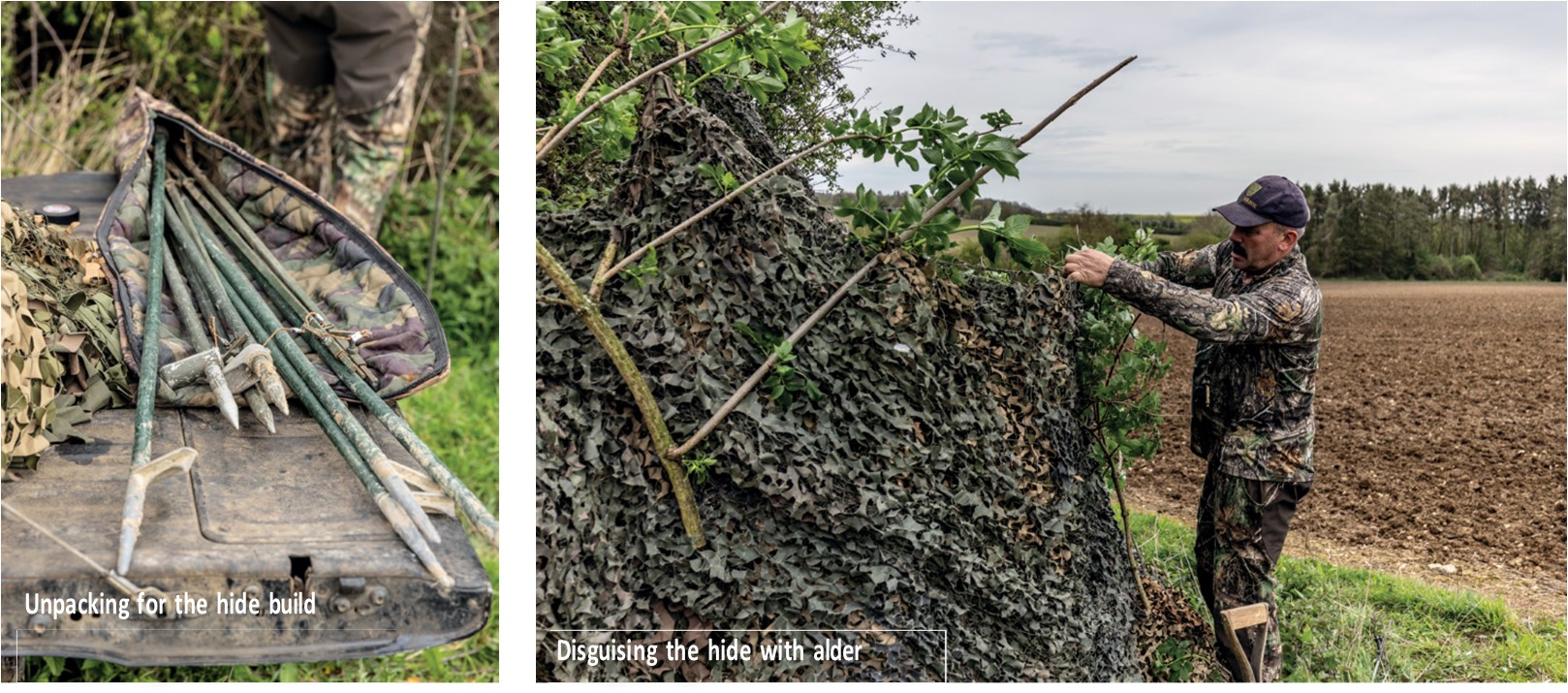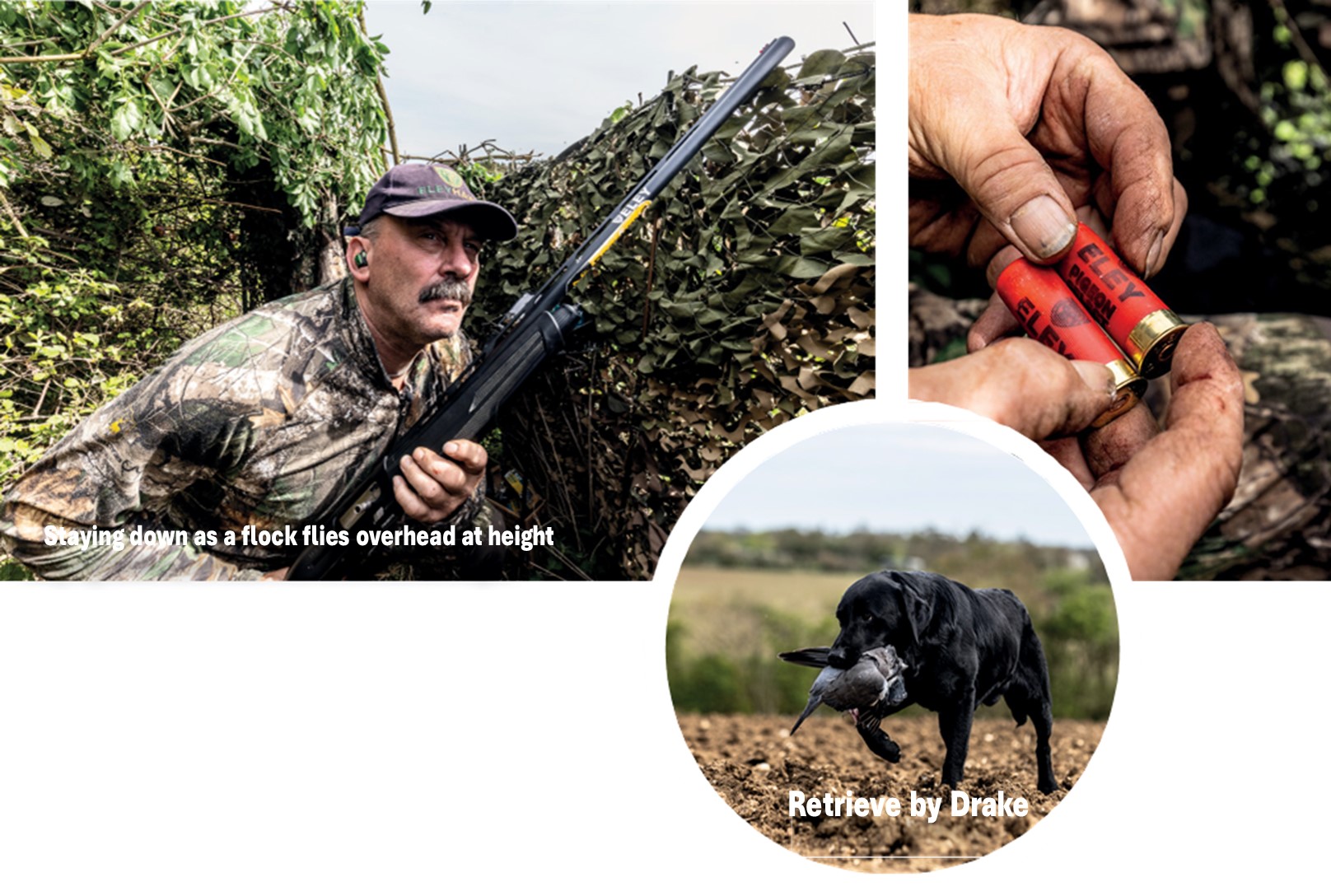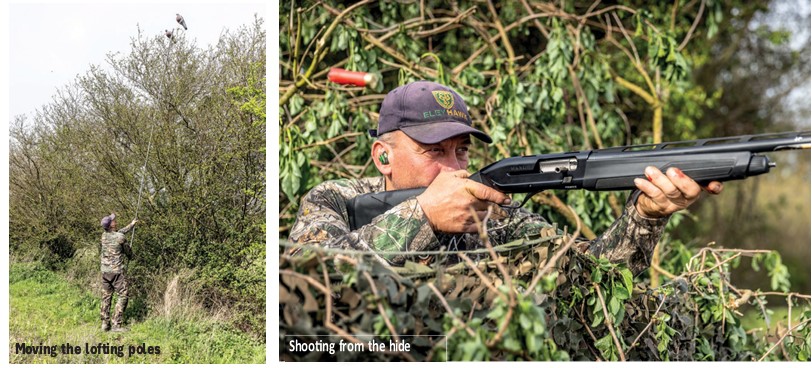Armed with fieldcraft and ingenuity, Geoff Garrod adjusts decoying tactics on the fly to entice wary pigeons into range
I had an interesting few hours decoying the other day on the last of the spring drilled wheat. It was a very last-minute situation where I spotted an opportunity and decided it was worth risking a few hours of my time on the off-chance that I could get some birds in the bag.
The drilled fields were at the far end of the estate and I’d seen pigeons up there the day before, so I was hopeful that when I arrived in the afternoon the next day they’d still be there. In a perfect world I’d have left the field until the next Saturday so that I could make a full day of the situation.

Work just didn’t allow that as I had stalkers coming on the Friday who would need my attention, and the fields that were being fed on by the pigeons were surrounded by footpaths and are very popular on the weekends. It would have been possible, safe and legal to shoot on the fields, but why run the risk of getting an aggravated dog walker having a go at you? So it was to be that afternoon or nothing.
Chosen spot
I’d been watching the flight-line from a distance at around 2pm when I arrived in the fields. The field was being cultivated by one of the farm workers, which I hadn’t been expecting, but there was still a good number of pigeons around. There was a corner of hedgerow that jutted out into the field was around 50m from a strip of woodland that the pigeons were using to sit in and digest their meal. It was my chosen spot for a hide as most of the pigeons were passing over the corner to get to the field.
I set off to build a hide and get my decoys out on the bare soil where they would be clearly visible. I knew that I’d need a decent, well camouflaged hide, so I cut some alder from the hedgerow to help disguise the edges and provide a little overhead cover in case pigeons flew in from behind me.
I always look for alder bushes for extra camouflage as they’re really fast growing trees and are very tolerant of being pruned. I know that they will soon grow back and I won’t cause any damage to the hedgerow or annoy the farm. It’s also a light wood, which makes it very easy to hang and prop-up where you need it. I placed my eight dead birds out in cradles and on sticks, climbed back into the hide and settled in to see what the first birds would do.

High birds!
It didn’t take too long for a few pigeons to show themselves and cross the field heading for my hide. The problem was that when I’d been watching them no more than half an hour before, the flight-line passed over my hedgerow at about 15-20m up. Now they were flying at 50-60m metres up! This may have been down to disturbance from the tractor that was working its way around the neighbouring field or my setting up the hide. Either way, it didn’t help.
The good news was that the pigeons were on the same line and were looking at the decoys. The bad news was that it’s very hard to get birds to decoy from that height, and they tend to look straight down into the hide and spot you if you move. All I could do was keep my head down, stay very still and let them pass over.
I had quite a few large flocks pass over and a good number of smaller groups. Seeing some smaller groups was encouraging and hopefully a sign that the birds would soon scatter around the area. As any decoyer knows, a perfect day is when you have groups of two or three moving around and not hundreds of birds in large flocks.
Then there was a change in their behaviour. Perhaps they had just settled down from the disturbance, but they seemed to want to feed and were looking for places to drop in. They would have fed at first light and perhaps now they were again hungry and keen to fill their crops. A few pigeons actually dropped into the decoys and the ones that didn’t passed right over well in range of my shotgun.

Sudden change
I had a good half hour or so of birds properly decoying, then all of a sudden I was getting passing shots only at around 40m. It was great sport, but I was puzzled as to why they had changed behaviour yet again.
The only thing I could do was try something different and change things a little. I decided to move the decoy pattern into a tighter formation and put out pigeons on bouncers to see if that would help. It didn’t. I decided to put out two decoys on my lofting poles in the hedgerow to try and get their attention from further away. No change. I moved the lofting poles to the other side of the hide. No change. I added more foliage to the already well-camouflaged hide. No change. It wasn’t as if the pigeons were spotting something they didn’t like and veering off at speed. They were just passing by at distance and not at all interested in decoying.

Everything looked so right, but it seemed the pigeons simply didn’t want to drop in to the decoys that day. I know some of you will be thinking that I should get a whirlie, but it’s just not my way and I’m not going to change now. I have absolutely no problem with anybody that does use mechanical gadgets, but it’s just not what I do and I prefer to work on fieldcraft alone. If I ever did try something along those lines I’d probably go for one of the many flappers that are on the market.
They always look very convincing.
On days like this you can only keep trying different things and I tried every trick I could think of. I moved the decoys around; I put bouncers out; I moved the bouncers to the left and then the right; I put lofting poles up; I moved them and made absolutely sure I wasn’t being spotted in the hide.
I had some great sport with the long, high and wide crossers, but if more birds had been keen to join my decoys on the ground I could have doubled the bag. So many of the passing birds looked as if they were on course to decoy well, but drifted past at the edge of my shootable range. I did kill some fabulous birds – and I missed some as well! I thoroughly enjoyed myself, and all you can do is tip your hat to the wily pigeons and hope to catch up with them next time.

As the afternoon went on I could see the main flock starting to feed on the field that had been worked by the tractor and then that very same tractor arrived on my field to work. The movement and constant trickle of birds dropping into the feeding flock in the distance told me that my day was done.
I finished up with 40 or so birds in the bag, so it was a pretty decent three hours all things considered. It did feel as if they should have decoyed better, though, and in a funny way
that is the joy of this kind of shooting. It’s anything but predictable and if anybody tells you that they always get it right, they’re either dishonest or incredibly lucky.
I’m still very grateful to be able to have sat in a hide and shoot 40 pigeons. You just never know what’s going to happen and you’re always learning. We did help to protect the new drilling and the pigeons will go off to the game dealer. So all in all it was a success! Next up will be pigeons feeding on the bare patches in the rape, which can be fantastic is all goes to plan.
